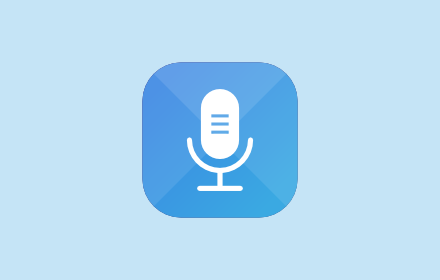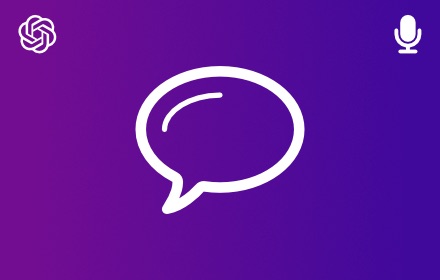Assistive Speech Technology for Disabilities: A Leap Towards Inclusivity
Assistive Speech Technology for Disabilities is revolutionizing the way individuals with various impairments interact with the world. This technology is not only enhancing their ability to communicate but also granting greater independence in their daily lives. At the core, it comprises two transformative tools: text-to-speech (TTS) and speech-to-text (STT) technologies, which convert written words into spoken voice and vice versa. Now, let's delve into the aspects that make these tools indispensable in fostering autonomy and empowerment for people with disabilities.
The Enabling Role of Speech Synthesis in Communication
Text-to-speech technology has become a beacon of hope for many individuals who face challenges in reading text due to visual impairments or learning disabilities such as dyslexia. TTS systems like the ones integrated within Voice Control for ChatGPT empower users by reading out digital text from books, websites, and documents, providing an auditory means to access information that would otherwise be inaccessible. Furthermore, TTS customization allows users to adjust the speech rate, tone, and sometimes even the accent, tailoring the listening experience to their preference, which can significantly improve comprehension and learning.
Moreover, TTS can serve as a communication aid for those with speech impairments, offering a voice where one may be limited or absent. By typing out their thoughts on communication devices, individuals can express themselves clearly, paving the way for enhanced social interactions and greater participation in community activities. These advancements have also provided new opportunities in education and employment, bringing down barriers that once stood in the path of personal growth and success.
Speech-to-Text: Unleashing Creative and Professional Potential
Conversely, speech-to-text solutions have been instrumental in assisting people with motor disabilities or those who find typing physically strenuous. With STT, users can dictate to their devices, efficiently converting speech into written words in emails, documents, and chat applications. This hands-free approach to operating technology allows for easier engagement with digital platforms and mitigates the strain on the body that comes with extensive typing or mouse use.
In a professional landscape, STT can greatly benefit those with disabilities by enhancing workplace accessibility. Real-time transcription during meetings ensures that people with hearing impairments can follow along, while voice commands enable the control of various software and hardware with ease. This level of integration of Assistive Speech Technology for Disabilities into the work environment exemplifies the tech industry's push towards inclusivity and compliance with accessibility laws and standards such as the Americans with Disabilities Act (ADA).
Assistive Speech Technology for Disabilities: The Future of Accessibility
The future of Assistive Speech Technology for Disabilities is bright, with continuous improvements geared towards making these tools even more adaptive and user-friendly. AI-driven innovations have led to more natural-sounding voices and greater accuracy in voice recognition, particularly in noisy environments. Researchers are also exploring how to imbue TTS and STT with emotional intelligence, allowing for more human-like interactions that can identify and respond appropriately to the user's mood.
Looking ahead, we can anticipate advancements such as predictive text models that offer personalized word suggestions, further streamlining communication for those with disabilities. Additionally, as the Internet of Things (IoT) expands, more devices with integrated speech technology will become available, increasing environmental control and promoting an active lifestyle.
Assistive Speech Technology for Disabilities not only breaks down barriers but it uniquely fosters a culture of innovation that prioritizes human needs. With each development, whether it's the compassionate Mia AI assistant within Voice Control for ChatGPT or other groundbreaking tools, technology continues to prove that its ultimate purpose is to serve and uplift humanity.
In conclusion, Assistive Speech Technology for Disabilities is a testament to the potential of AI to create a more inclusive world. It is a powerful ally for individuals with disabilities, offering newfound autonomy and participation in a society that is progressively realizing the value of technology designed for all.
Subscribe to our newsletter
Subscribe to our newsletter for tips, exciting benefits, and product updates from the team behind Voice Control!
Other projects from the team

Talkio AI
The ultimate language training app that uses AI technology to help you improve your oral language skills.

TalkaType
Simple, Secure Web Dictation. TalkaType brings the convenience of voice-to-text technology directly to your browser, allowing you to input text on any website using just your voice.

Voice Control for Gemini
Expand the voice features of Google Gemini with read aloud and keyboard shortcuts for the built-in voice recognition.